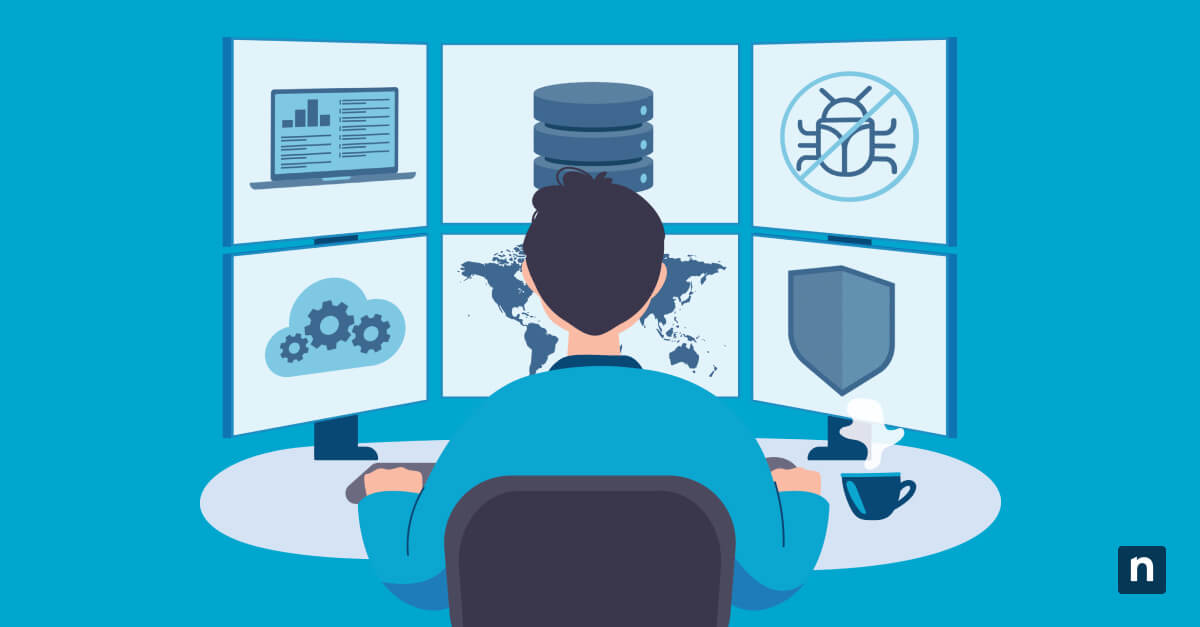Key points
- Easily show or hide the Task View button on the Windows 11 taskbar using Settings, Registry Editor, PowerShell, or Group Policy. These are all ideal for both home users and IT administrators.
- Settings (GUI) is the fastest method for individual users to toggle the Task View button without admin rights, where changes apply instantly per user.
- Use Group Policy to remove the Task View button across multiple machines in enterprise environments; requires admin rights and Windows 11 Pro, Enterprise, or Education.
- Registry Editor and PowerShell offer scriptable, admin-level control of Task View visibility on any edition of Windows 11, including Home. This method is ideal for automation or advanced customization.
- Task View functionality is also accessible via keyboard shortcuts.
The taskbar Task View button offers quick access to virtual desktops and recent activities. While powerful for multitasking, you might want to remove it for a cleaner look, a kiosk setup, or managed enterprise desktops. Or perhaps you need to restore it after it went missing.
In this guide, you’ll learn how to add or remove the Task View button on your Windows 11 taskbar using simple Settings, Group Policy for admins, or the Registry Editor.
Configure enterprise Windows workstations at scale to enhance end-user productivity.
📝 Get started with a NinjaOne Endpoint Management free trial.
Before adjusting your Task View button on the taskbar, consider the following. Most approaches here can be done in all editions of Windows 11 (Home, Pro, Enterprise, and Education); however, ensure that your account has administrator access to fully utilize the tools used here.
| Click to Choose a Method | 💻
Best for Individual Users |
💻💻💻
Best for Enterprises |
| Method 1: Settings (GUI) | ✓ | |
| Method 2: Group Policy | ✓ | |
| Method 3: Registry Editor | ✓ | ✓ |
| Method 4: PowerShell | ✓ | ✓ |
Method 1: Add or remove the task view via Settings (GUI)
📌 Use Case:
Windows Settings is the quickest approach to show or hide the task view button on your taskbar.
📌 Prerequisites:
- Applies to all editions of Windows 11: These steps work across Windows 11 Home, Pro, and Enterprise editions.
- Administrator privileges are not required: No administrator privileges are required for this method.
- Per-user setting: This method applies only to the currently logged-in user and must be repeated for each user profile if needed.
- Open Settings (press Win + I).
- Click Personalization, then select Taskbar.
- Under Taskbar items, locate the Task view switch.
- Toggle it On to show the Task view button.
- Toggle it Off to remove the button.

The changes will immediately take effect on your taskbar. You can easily reserve this any time using this method.
Method 2: Enable or disable using Group Policy
📌 Use Case:
This approach is ideal for IT administrators managing systems in work environments. There are two ways we can use this method.
📌 Prerequisites:
- Applies to some editions of Windows 11: These steps work across Windows 11 Pro, Enterprise, and Education editions only.
- Administrator privileges: This method requires administrator rights.
- Per-user setting: This method can be configured per-user or per-machine in policy. However, once enforced, it overrides per-user preferences and applies uniformly across applicable users (especially in domain environments).
Note: This method is available in Windows 11 Pro, Enterprise, and Education editions. Home users can use the Registry method instead.
Option 1
- Open Group Policy Editor.
- Press Win + R to open Run.
- Type gpedit.msc, then press Enter to open the Group Policy Editor.
- Navigate to Taskbar Settings.
- Go to User Configuration > Administrative Templates > Start Menu and Taskbar.
- Configure the policy.
- Double-click the Hide the Task view button or Remove Task view button from taskbar policy, then select one of the following:
- Select Enabled to hide the Task view button.
- Select Disabled or Not configured to show it.
- Double-click the Hide the Task view button or Remove Task view button from taskbar policy, then select one of the following:
- Confirm changes.
- Click Apply, then OK.
Option 2
Before proceeding, ensure you have installed the Windows 11 22H2 Administrative Templates (ADMX). Without these, the “Hide the Task View button” policy will not be visible.
- Open the Group Policy Management console.
- Launch Server Manager, then click the Tools menu.
- Select Group Policy Management.
- Create a new Group Policy Object (GPO).
- In the Group Policy Management window, navigate to your domain.
- Right-click on the Organizational Unit (OU) you wish to target.
- Select Create a GPO in this domain, and link it here….
- Provide a name for your new GPO (e.g., Hide Task View Button Policy).
- Click OK.
- Edit the new GPO.
- Right-click the GPO you just created.
- Select Edit to open the Group Policy Editor.
- Navigate to the policy.
- Go to User Configuration > Administrative Templates > Start Menu and Taskbar.
- Look for the Hide the Task View button policy.
- Configure the policy.
- Similar to the previous option, double-click the policy, then select one of the following:
- Select Enabled to hide the Task view button.
- Select Disabled or Not configured to show it.
- Similar to the previous option, double-click the policy, then select one of the following:
- Confirm the changes.
- Click Apply, then OK.
Tip: For both options, you can run the gpupdate /force command in Command Prompt (Admin) to enforce the policy update.
Method 3: Add or remove via Registry Editor
⚠️ Warning: Editing the registry incorrectly can cause system issues. Create a backup before proceeding.
📌 Use Case:
Windows 11 Home or advanced users can control the Task View button directly through the Windows Registry Editor for scripting or system customization.
📌 Prerequisites:
- Applies to all editions of Windows 11: These steps work across Windows 11 Home, Pro, and Enterprise editions.
- Administrator privileges: This method requires administrator rights.
- Per-user setting: This method applies only to the currently logged-in user and must be repeated for each user profile if needed.
- Open the Registry Editor.
- Press Win + R to open Run.
- Type regedit, then press Enter to open the Registry Editor.
- Confirm any UAC prompts.
- Navigate to the Taskbar key.
- Paste or go to this address key: HKEY_CURRENT_USER\Software\Microsoft\Windows\CurrentVersion\Explorer\Advanced
- Modify the DWORD value.
- Search and double-click the ShowTaskViewButton.
- If it does not exist, right-click an empty space, then select NEW > DWORD (32-bit) Value.
- Name the value ShowTaskViewButton.
- Set the value.
- Input 1 to show the button.
- Input 0 to hide it.

- Confirm changes.
- After setting the value, the change should take effect immediately.
Method 4: Automate using PowerShell
📌 Use Case:
Automate Task View button management instantly using PowerShell scripts for deployment or bulk configurations.
📌 Prerequisites:
- Applies to all editions of Windows 11: These steps work across Windows 11 Home, Pro, and Enterprise editions.
- Administrator privileges: This method requires administrator rights.
- Per-user setting: The script affects only the current user unless explicitly extended to other user profiles.
- Open PowerShell.
- Press Win + X, then select Terminal (Admin).
- If PowerShell is not the default command-line tool in the Terminal, click the dropdown arrow in the tabs above, then select it.
- Run the following commands.
To show the Task view button, run:
Set-ItemProperty -Path “HKCU:\Software\Microsoft\Windows\CurrentVersion\Explorer\Advanced” -Name “ShowTaskViewButton” -Value 1
Stop-Process -Name explorer -Force
To hide it, run:
Set-ItemProperty -Path “HKCU:\Software\Microsoft\Windows\CurrentVersion\Explorer\Advanced” -Name “ShowTaskViewButton” -Value 0
Stop-Process -Name explorer -Force
⚠️ Things to look out for
| Risks | Potential Consequences | Reversals |
| Not restarting Explorer after Registry or PowerShell changes | Task View button may not update as expected | Run Stop-Process -Name explorer -Force or restart the system |
| Using incorrect Registry path or value name | No effect; Task View button remains unchanged | Ensure the path is correct and the value is named ShowTaskViewButton |
| Missing Group Policy ADMX templates | “Hide the Task View button” policy won’t appear in GPO | Download and install the latest Windows 11 ADMX templates |
| Group Policy overriding local settings | Changes made via Settings or Registry may be ignored | Adjust or remove the Group Policy setting to restore control |
| Using Group Policy on Windows 11 Home edition | Group Policy Editor not available; method fails | Use Registry Editor or PowerShell instead |
Pro tips after modifying the task view
Even after hiding the Task View button from your Windows 11 taskbar, key functionality remains accessible through these workarounds and enterprise solutions.
Access virtual desktops without the button
- Task View remains fully accessible via the Win + Tab shortcut even when the button is hidden from the taskbar.
Switch desktop
- Users can still switch between virtual desktops with Ctrl + Win + Left/Right Arrow without the taskbar icon.
Taskbar layout enforcement
- Enterprises can permanently hide Task View using LayoutModification.json files to define locked taskbar configurations.
Roaming profiles
Task View visibility settings persist across domain-joined devices of the user profile when configured via Registry or Group Policy.
[in-context-ct id=’3″]
Controlling your task view
Managing the Task View button gives you precision over your Windows 11 workspace, whether simplifying interfaces for kiosks or enforcing consistency across enterprise deployments.
As this guide has shown, you can show or hide the Task view button by toggling it instantly via Settings, automating with Registry/PowerShell, or deploying enterprise-wide using Group Policy/JSON layouts.
Remember, even when hidden, core functionality stays accessible via the Win+Tab shortcut for virtual desktops or Ctrl+Win+Arrow to switch workspaces. Whether you’re an IT admin streamlining deployments or a power user curating a minimalist taskbar, these methods put you in command.








